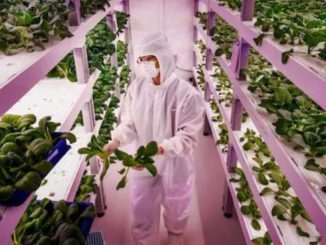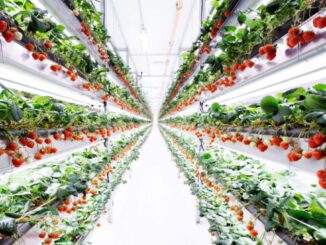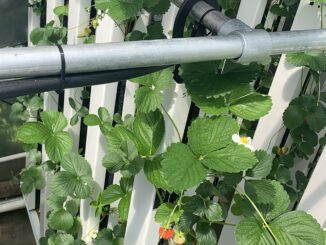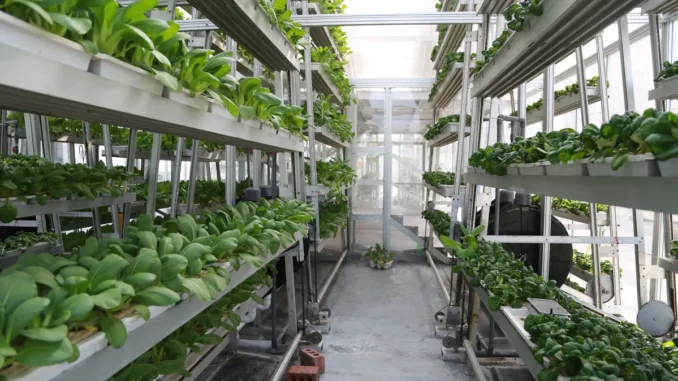
Sustainable Vertical Farming
With localized food production we often envision massive indoor farms lit up with LEDS, but what about sustainable vertical farming? Sky Greens has roots in Singapore based high density vegetable growing and has spread their award winning vertical farming technology across the globe since 2009. The Sky Greens way of doing things differs in some respects from popular indoor farming and CEA practices of the present day. Don’t look for shipping containers packed with power hungry LED lighting–you can’t miss a Sky Greens set-up. That’s because these systems run up to 9 meters (almost 30 feet) tall and utilize natural lighting with occasional light supplementation. Sky Greens Sustainable Vertical Farming systems are right at home in a greenhouse, whether in rural, urban or even rooftop settings.

It’s OK if you are afraid of heights.
While the systems stand tall, the operator does all the work at ground level. The growing racks rotate like a ferris wheel so all the work like planting, harvesting, crop inspection, etc is performed at ground level. For a modest lineal foot print of 6 feet by 10 feet, by either 10, 20 or 30 feet tall you can fit a LOT of mature plants. In a lineal foot print of only 60 square feet growers can harvest over 5000 mature plants, depending on type of crop or for example 100 grams of basil per plant per week. That works out to just under a million plants per acre (about 995,000 plants).
Low Power Sustainable Vertical Farming
Would you believe that for eighteen 30 foot tall racks, the system only consumes ½ HP worth of power–just over a few hundred watts. Yes, you read that right. Quite remarkable considering each tray is designed to support up to 120 LBS. The Sky Greens design is in fact so clever that in 2015 the design became an Index Award Winner (with nominations from over 72 countries).
Typically, the rotation of the racks is set for 16 hours of travel time, although this may be speeded up for times like planting and harvesting. The rotation is powered by the flow of nutrient solution to the system (water powered, how cool is that)–the racks receive irrigation when they reach the bottom of the system automatically.
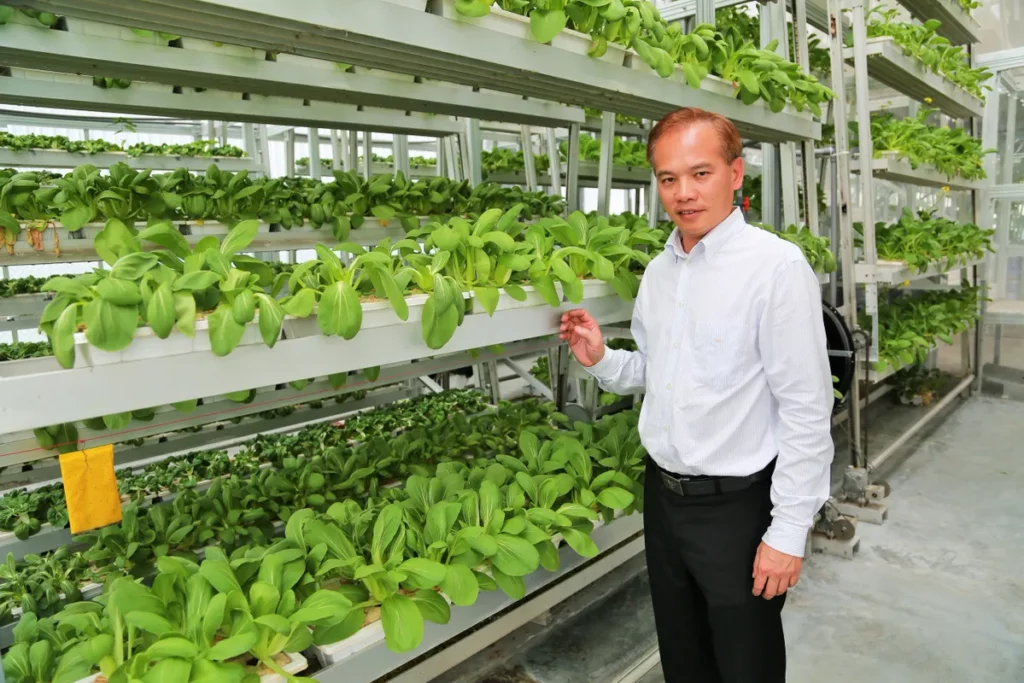
Because the racks are traveling through the vertical space in the greenhouse structure, they receive good exposure to natural lighting levels on all sides of the crop and have plenty of access to fresh air–a notable challenge in stationary racking requiring lots of artificial lighting.
Flexibility for Successful Sustainable Vertical Farming
Each rack contains 8 growing trays that can be filled with light weight growing media like coco coir, perlite, peat blends, etc. Ideal for sustainable vertical farming operations that seek an organic certification. For those that prefer water culture based cultivation methods, just nutrient solutions can be added to the trays each cycle for completely medialess hydroponics. The Singapore based Sky Greens vertical farming operation reuses their growing medium for up to 3 cycles, while recharging the medium between each plant cycle.
A wide variety of crops can be grown, the standard racking system allows for plants to be grown to eighteen inches tall. However, the flexibility of the design allows racks of trays to be removed for taller plants, if required.
Popular crops for the Sky Greens Sustainable Vertical Farming System include: salad greens, herbs and strawberries.
5 Tonnes (5000 KG) of fresh greens and herbs are harvested DAILY at the Sky Greens Singapore facility which utilizes 2000 towers.
Sustainable Vertical Farming Costing
Capital expenditures are definitely part of the equation in sustainable vertical farming. One 6 foot by 10 foot by 10 foot tall system from SkyGreensCanada.ca has an MSRP of $7300 Canadian Funds.

